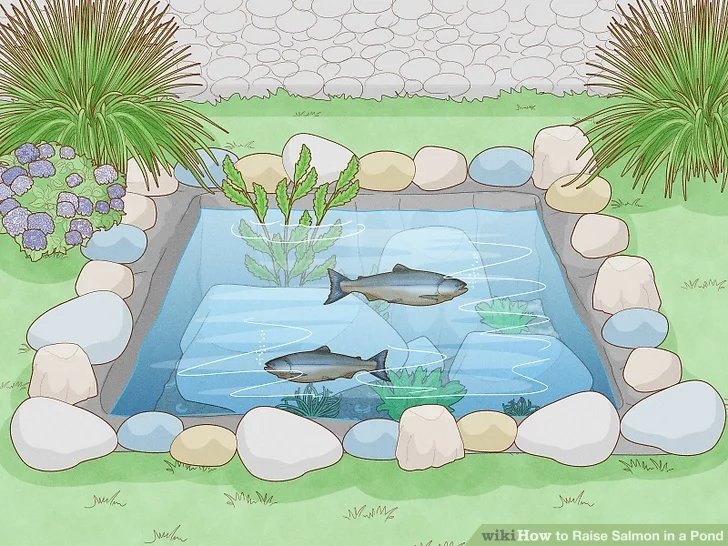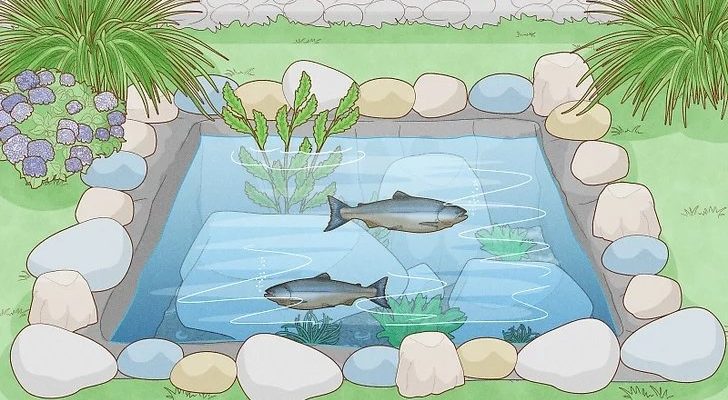
First off, it’s important to understand that salmon come from cooler waters and have specific needs compared to many other pond fish. The type of fish you want to keep them with can make a big difference in their health and happiness. So, let’s dive into what you need to consider when thinking about keeping salmon with other pond fish!
Understanding Salmon’s Needs
Before anything else, let’s chat about what salmon fish need to thrive. Salmon are known for their rich colors and energetic behavior, but they also have specific environmental needs. They thrive in colder waters, usually between 50°F and 60°F (10°C to 15°C). If your pond heats up too much, salmon might not be their usual lively selves.
Another thing to remember is that salmon are highly oxygen-dependent. Because they come from rivers and streams, they’re used to well-oxygenated water. If your pond lacks sufficient aeration, this could lead to health issues for the salmon, making it crucial to monitor their environment closely.
Lastly, salmon are known for their predatory nature. They’re not afraid to chase after smaller fish, which can create an uneasy atmosphere in your pond. So, keeping a close watch on their behavior is essential if you decide to introduce them to other species.
Choosing Compatible Pond Fish
Now that we know what salmon need, let’s think about which pond fish might be compatible with them. When picking fish to join your salmon, you’ll want to consider their *size, temperament,* and *environmental requirements*.
Some fish that could coexist with salmon include:
- Trout: These fish have similar needs and can live happily alongside salmon.
- Goldfish: While they are generally peaceful, they can be small enough to become a snack for a hungry salmon.
- Catfish: These bottom dwellers usually stick to their own territory and are less likely to confront a salmon.
However, be cautious with larger fish that might challenge the salmon or compete for resources. Larger species, like koi, can also disturb the sediment in your pond, which might affect the water quality that salmon crave.
Avoiding Aggression in Your Pond
Here’s the thing: keeping peace in your pond is all about managing the personalities of the fish. Salmon are strong swimmers and tend to be a bit aggressive, especially if they feel threatened or crowded.
To prevent aggression, consider these tips:
– Space Matters: Make sure your pond is large enough for all the fish. Crowding can lead to stress.
– Introduce Gradually: If you’re adding new fish, do it slowly. This helps everyone adjust to one another without too much chaos.
– Provide Hiding Spots: Use plants, rocks, or other decorations so that smaller fish can find shelter when they feel threatened.
The more you create a balanced environment, the less likely you’ll have to deal with conflicts among your fish.
The Impact of Pond Size and Environment
The size of your pond plays a significant role in whether salmon can coexist with other fish. A larger pond typically offers more space for fish to swim and hide, which can mitigate some aggressive behavior. But if you have a smaller pond, you might find that tensions rise quickly.
It’s also worth noting the water quality. Salmon prefer clean, clear water with low levels of toxins. Have you ever tried to relax in a muddy pool? Fish feel the same way! Regularly test your water for pH levels, ammonia, and other factors to ensure a healthy environment.
Using a filtration system can help maintain water quality, keeping your salmon and other fish safe and comfortable.
Feeding Considerations
Feeding your salmon and other pond fish can be another area where problems might arise. Salmon are carnivorous and thrive on a diet of high-protein foods. If you feed them standard pond pellets, they might not get the nutrients they need, leading to aggressive behavior as they seek out better food sources.
To keep your fish fed properly, you can:
– Provide a Protein-Rich Diet: Look for specific fish food designed for salmon that is high in protein.
– Avoid Overfeeding: It’s tempting to throw in a lot of food, but overfeeding can lead to water quality issues.
– Consider Feeding Schedules: Establish regular feeding times to ensure all fish get their share without someone eating someone else’s lunch!
Keeping an eye on how much food you give can make a world of difference for your fish’s happiness.
Monitoring Health and Behavior
Once your salmon and other pond fish are settled in, it’s vital to keep an eye on their health and behavior. Fish can’t tell you how they feel, but there are signs you can look for. For salmon, watch for any changes in their activity levels, color, or appetite. Changes in these areas could indicate stress or health issues, so stay alert!
If you notice any signs of illness, like fading colors or lethargy, it may mean that the environment isn’t right or that they’re not getting along. Don’t hesitate to consult a vet who specializes in fish if you’re unsure.
Regularly observing your fish not only helps in early detection of problems but also adds to the enjoyment of keeping a pond!
Deciding whether to keep salmon with other pond fish isn’t a simple yes or no. It’s all about finding the right balance! From understanding the specific needs of salmon to choosing compatible tank mates and ensuring a safe environment, there’s a lot to consider.
By providing the right care and monitoring your fish closely, you can create a happy home for both salmon and other pond residents. Remember, like any good friendship, it takes effort to maintain harmony in your pond. So, gear up for some fun (and fishy) adventures ahead!

